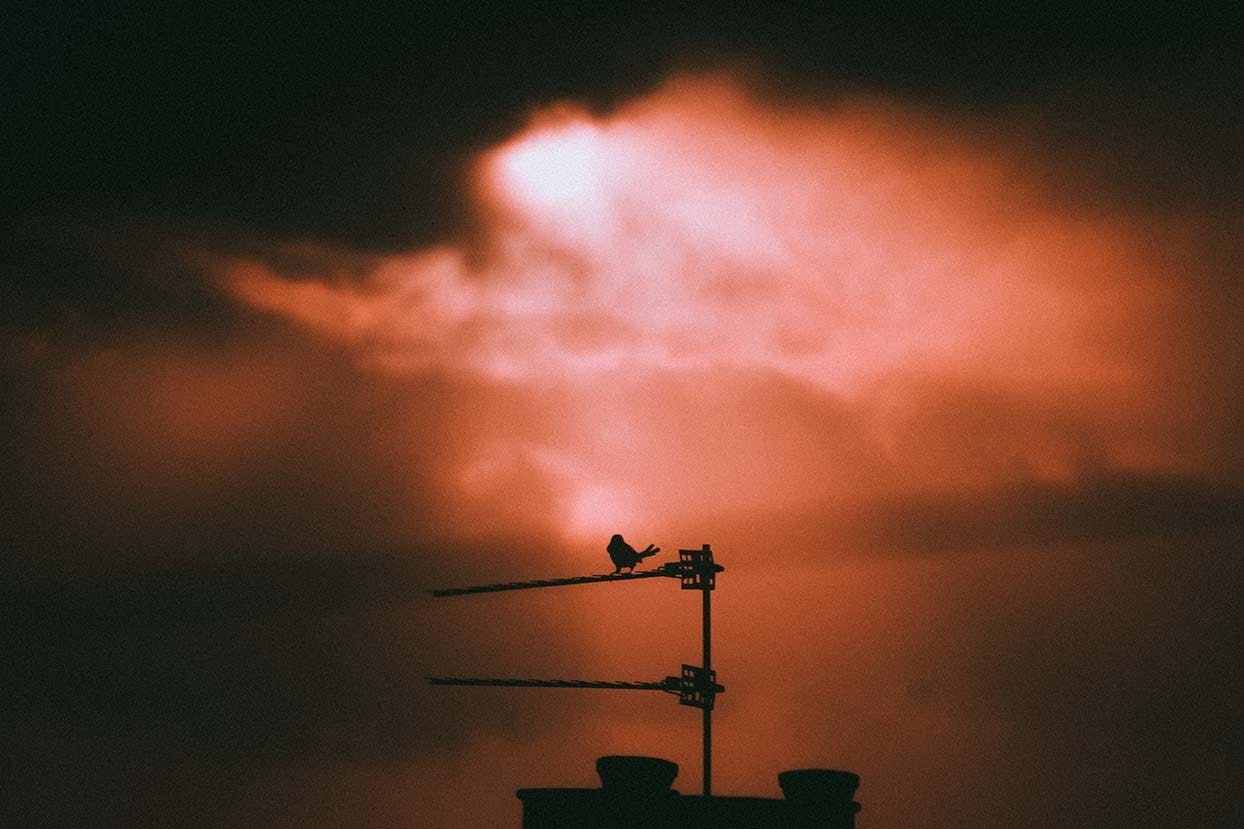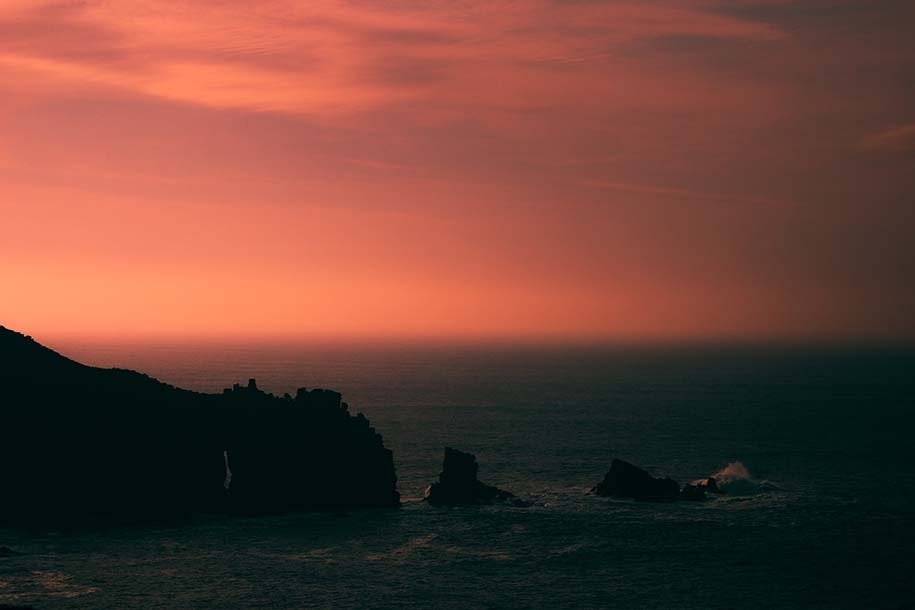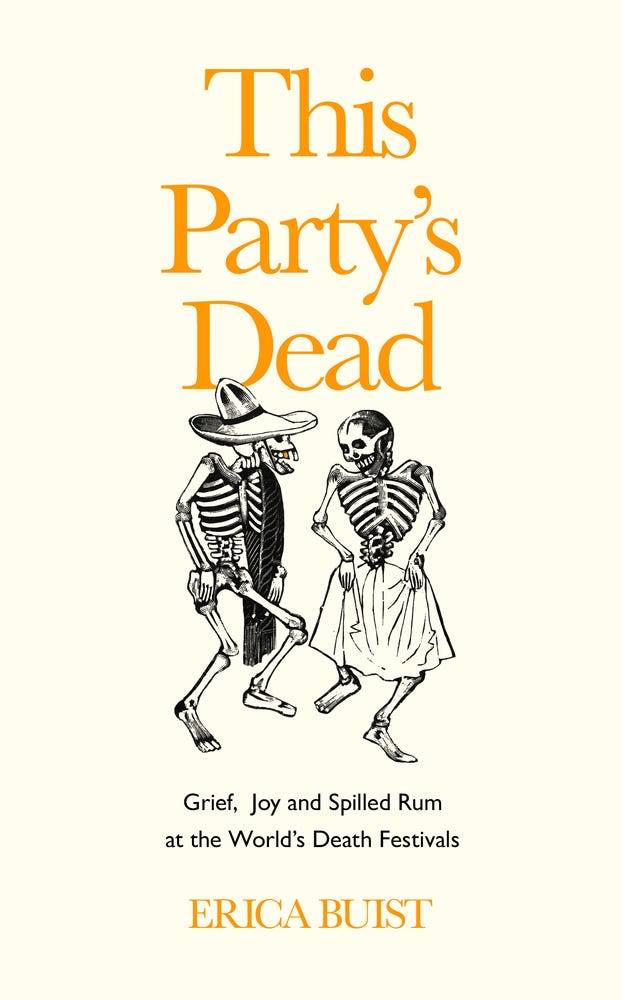Simple climate action // I S S U E # 4 6 // F U N E R A L S
By Erica Buist, author of the new book This Party’s Dead.
You’ve reached the final installment of the death and climate change series. Thanks for coming along! Today, I’m hitting you with some actual, practical tips on a less impactful funeral, navigating the desire to do right by the climate while having a meaningful sendoff to the hereafter. So where do you start?
Follow me.
One last good thing
There’s a tendency when it comes to ethical choices to fall into the “What about?” trap. Oh, you’re pescatarian? WHAT ABOUT OVERFISHING? Oh, you’re vegetarian? WHAT ABOUT THE DAIRY INDUSTRY? Oh, you drive a Prius? I SAW YOU GET ON A PLANE THAT ONE TIME, YOU HYPOCRITE. What are we driving at when we engage in this kind of nitpicking, this demand for more care, more action, more unattainable perfection? ‘You shouldn’t do one good thing unless you do every good thing’? Here’s where you start with having a less impactful funeral: do what you can, starting with your beliefs.
If, in this series of essays, I’ve outlined why a practice you believe in is highly polluting, don’t be tempted to throw the baby—or, in this case, the idea of trying to be greener—out with the bathwater. Yes, embalming causes health issues in those who have to perform it and yes, its popularity in the US is largely down to letting people think it’s required when its original purpose was to preserve the bodies of Civil War soldiers long enough for the families to see them one last time. It also has a strong reputation for being linked to death denial—the stuffed eye sockets, the padded cheeks, the makeup, that visual insistence that the person is simply sleeping. But for some communities, embalming is less about denying death and more about giving the deceased the respect and care they were denied in life. As Dr Kami Fletcher said in her excellent piece on race and the funeral industry, “the job of the African American undertaker was to take care of the body with dignity and respect. He/She had to make the police officer’s bullet holes disappear, hide the rope marks from the lynching, the infinite bruises from the KKK terrorists.”
If a particular ritual holds special significance for you, keep it. Maybe your religion teaches that fire cleanses, making cremation your only option. Perhaps it’s not even of religious significance to you, but is a part of a genuinely desired, much-thought-out death plan. Perhaps you’ve put as much thought into it as the comedian Tom Basden, who sang a song with the lyrics:
“When I die and I’m cremated
Please scatter my ashes at sea
And then scoop them out again
And scatter them under an oak tree
And hoover them up once more
And put them in an urn on top of the TV
‘Cause I was a bloody awkward bastard when I was alive
And that’s how I want you to remember me.”

The truth is, the more easily-solved climate issue when it comes to the environment is not the death rituals of those with sincerely-held beliefs, but those who have never examined their choices, and make them based purely on a meaningless, secular status quo.
Which brings me to my next point, for those who are free to choose their manner of burial.
Don’t let the culture make choices for you
I cannot count the number of times I’ve been asked “where would you like your ashes to be scattered?” Perhaps the assumption is not surprising when you combine two facts about the UK, where I live: 80% of people are cremated, and people don’t like to put much thought into death. I’m supposed to answer the question with a whimsical discussion about sending my family on a mad trip to scatter my ashes on a mountain or at a water park to give them a fun day out. What I’m not supposed to do is point out that cremation is a highly toxic practice that people only choose because they perceive it as coming with less pomp and circumstance than burial—which is, in our minds, the only other option.
When my father-in-law died, suddenly and unexpectedly, having never told us his wishes, I don’t remember giving much thought to what we would do with his body: not burial, because he wasn’t Catholic—so, cremation, obviously. You know what I wish someone had told him?
Plan it
The days after your death are both the highest moment of trauma for your loved ones, and the moment at which they will be asked to take all the decisions on your send-off. If you don’t have any plans in place—which the majority don’t since advance planning is still so frustratingly rare—in most cases people will not have the mental space and energy to do anything but revert to the status quo, which is: burial if you believe in that sort of thing, cremation if you don’t. Since the status quo isn’t an environmentally friendly one, expressing your wishes for a light environmental touch will be hugely important in making it happen. Write it down, and let people know you’ve written it down—you could even send a group email.
Balance out meaning with the genuine, fact-based, scientific impact of your choice
You may find your more romantic desires clash with the gritty facts. Wanting your ashes to nourish a tree is a beautiful sentiment, but is it worth the carbon emissions given that cremains categorically do not make good fertilizer? Perhaps you like the idea of spending eternity in your favorite park; but how much do you actually want it? Is it worth the environmental impact of cremation? Maybe it is. Perhaps you want to be cremated for a specific reason. Perhaps you want your children to keep you on a shelf (and I must agree, in that situation cremation is definitely the way to go, unless you know a truly gifted taxidermist).
A lot of people choose cremation as the “no fuss” option. Because burial is associated with a lot of Victorian wealth flaunting—vaults, mahogany caskets, silk linings—cremation started gaining a reputation as the comparative “no fuss” option. But environmentally, cremation is a whole lot of fuss, and it’s fuss that carries on long after the mourners have gone home. The real no-fuss option is green burial—and one that gives you the option of the more opulent types of fuss, should you want it. You can be dressed your best for a green burial, you can have the Aretha Franklin style costume changes, or the New Orleans style parade. You can have it all, and then be recycled back into the earth.
Traditionalist? Green it up
Even if you’re drawn to a more traditional practice, there are often greener options you can take. If you need to be buried in the traditional way, the body whole and intact, there are so many caskets available that don’t involve any glue, varnish, bleached fabrics, or metal—simple wooden caskets, woven caskets, or even cardboard containers are all options. Some even choose to be buried in a shroud, the greenest possible option for burial—and if you’re lucky enough to be from the Highlands of Madagascar, you’ll be exhumed and given a new one every seven years.
If you really want to be cremated, you can offset a little of the carbon footprint by being careful about the urn you choose. Biodegradable urns made of paper or fiber are available—but the outright winner in terms of not leaving a trace has got to be the Flow Ice Urn, an urn made from ice that “floats gracefully on water while it gradually frees the cremated remains of a loved one, returning the ashes to nature in the most ecologically pure manner”.
Corinne Elicone, public programs and outreach manager at Mount Auburn Cemetery, points out that there are many ways to mix greener options into non-green death care. “You might want a conventional burial in a cemetery, but there’s no requirement that you must be embalmed for that (as much as a funeral worker might try to convince you that you do). If embalming is what you want, some cemeteries will allow embalmed bodies to be buried without a concrete vault liner—concrete production being incredibly high in carbon emissions. Try a wicker coffin, a simple pine box, or something similar that will decompose over time as opposed to a lacquered air-tight casket with all the metal fixings. Instead of an upright grave marker, get a flush marker which will have less impact on the landscape and require less stone to create. There are many ways you can customize a conventional burial to make it slightly greener.”
Fabulous green burial options
One new practice is human composting, which is beginning to take shape almost a decade after the idea struck Urban Death Project founder Katrina Spade. The body is broken down into fertilized soil, initially by being laid over wood chips and aerated to create the perfect environment for the body to be broken down quickly. After 30 days, what’s left behind apart from the skeleton and any non-organic matter (such as prosthetics, pacemakers, or fillings) is a substance similar to topsoil, which families can either take home or donate to the onsite gardens.
Another option is water cremation (or alkaline hydrolysis), which mimics the decomposition process in the space of a few hours. The body is placed in a high-pressure tank with water and lye (potassium hydroxide), and heated to 300F, a little under the temperature you’d use to bake a turkey. What’s left is bleached white bones, which are then processed into ash, and a perfectly safe and sterile water. Water cremation only uses 10% of the energy that fire cremation does. Corinne says that, “Aquamation has all the hallmarks of cremation: it’s quick, cost-effective, and the end product is virtually identical to cremated remains.” Unless you hold a religious belief that prioritizes fire, there’s no downside to choosing water cremation instead.

Green up your final adieu in other ways
All that said, the burial isn’t the only consideration when it comes to your funeral. Sustainability researcher Elisabeth Keijzer found that while eco-friendly caskets are an excellent way to limit emissions, a funeral service can actually produce three times the environmental impact of the ground burial itself. We shouldn’t overlook the carbon footprint from guests traveling to the funeral, preparing food, even the growing of flowers for the arrangements.
Mortician Michelle Acciavatti has some surprising suggestions when it comes to green-ifying a funeral, “Think about the number of people that are going to come to your funeral. Are they going to carpool? Can they walk to where you’re going to be buried? Maybe you can charter an electric bus if there are going to be a lot of people attending. How many people are going to visit your grave—are there going to be people driving to and from the cemetery all the time? There are a lot of things to balance and think about.” Acciavatti continues, “My advice is to keep it as local as possible. You can also work with funeral homes like mine that use primarily solar and wind energy (with propane as a backup to make sure our refrigerator is maintained at a constant temperature) and cools bodies with reusable ice. It’s just trying to minimize areas where you see environmental impact.”
After this month's series, what are the chances you’ll spring a green funeral? 🌱💀⚱️⚰️
Maybe. It might take some time for me to process the idea, but the seed has been planted. 🌱
Not a chance. If anything, I'm even more put off by the idea than when the month started. 💀⚱️⚰️
You can pick up Erica’s book This Party’s Dead here. It’s out in hardcover on August 10.
Hothouse is a weekly climate action newsletter written and edited by Mike Coren and Cadence Bambenek. Everything we publish is free to read—your donations fund our writers and artists.








